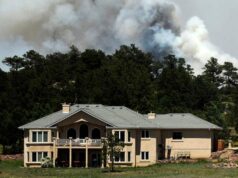
The world is failing to protect its oldest forests. Even as we need forests to store carbon more than ever, the world lost tree cover last year. According to a new report, a soccer field of forest cover was wiped out every six seconds last year. What’s more, new hotspots are popping up within the Brazilian Amazon where indigenous communities are struggling to protect their homelands from emboldened illegal land-grabbers.
These new numbers come from the University of Maryland, which released the data Tuesday on Global Forest Watch. The report focuses on primary forest, where trees are oldest and most effective at storing carbon and harboring wildlife. The authors found that primary forest loss increased by nearly 3 percent in 2019 compared to the prior year. That amounted to 1.8 gigatons of carbon dioxide emissions, equivalent to 400 million cars. This was the third-highest rate of loss since the turn of the century.
“The level of forest loss we saw in 2019 is unacceptable,” Frances Seymour, a distinguished senior fellow with the World Resources Institute, said on a press call for the new report. “2020 was supposed to be the year we halted deforestation, but we seem to be going in the wrong direction.”
The 2020 timeframe was outlined in the United Nations Sustainable Development Goals. While tree cover loss includes more than deforestation, which is entirely human-driven, it’s an important metric for primary forests because it allows researchers to track where long-term damage may be happening.
Brazil, Bolivia, Colombia, the Democratic Republic of Congo, and Australia all saw record losses. The disastrous bushfire season contributed to Australia’s record tree cover loss. 2019 was the country’s worst year on record: It saw a six-fold increase in tree cover loss compared to 2018.
But tropical forests are of large concern, particularly Brazil’s Amazon. Experts expect deforestation to worsen this year. That’s bad news for all of us as the Amazon helps sequester incredible amounts of carbon. It’s even worse news, though, for the people who live there and have to face the violence from these illegal land grabs and the loss of critical resources. In Brazil, this is a direct result of right-wing President Jair Bolsonaro, who’s called on his constituents to strip the Amazon for private gain.
“For indigenous people, it’s necessary and important to maintain those forests and territories because that allows them to continue their culture and practice,” Tuntiak Katan, a Shuar leader and general coordinator of the Global Alliance of Territorial Communities, told Earther in Spanish. “On the other hand, it’s important that these territories exist because they not only benefit the indigenous people who live there. They benefit the entire planet and all of humanity because they help mitigate the effects of climate change.”
Research has shown that deforestation rates are lower in indigenous territories and protected areas. That’s because these communities need to protect the rainforest to maintain their culture. In the Amazon, indigenous peoples protect the rainforest to protect their traditions, Peter Veit, director of the Land and Resource Rights Initiative at World Resources Institute, told Earther. He said granting land rights to indigenous communities in the Amazon is usually enough to protect forests “because, historically, they have managed those lands in ways that are consistent with conservation and sustainable use.”
While there are clear solutions to stop deforestation and tree cover loss, this year is likely to be a worse year for our forests than the last. The coronavirus pandemic may push countries to look toward extractive industries to boost their economies, and it may prevent agencies and indigenous communities alike from sufficiently protecting the land with boots on the ground. Proper enforcement and monitoring should be able to stop the illegal forest loss we experienced last year—but only if world leaders are willing to invest in conserving these key ecosystems.
Source: gizmodo.com








